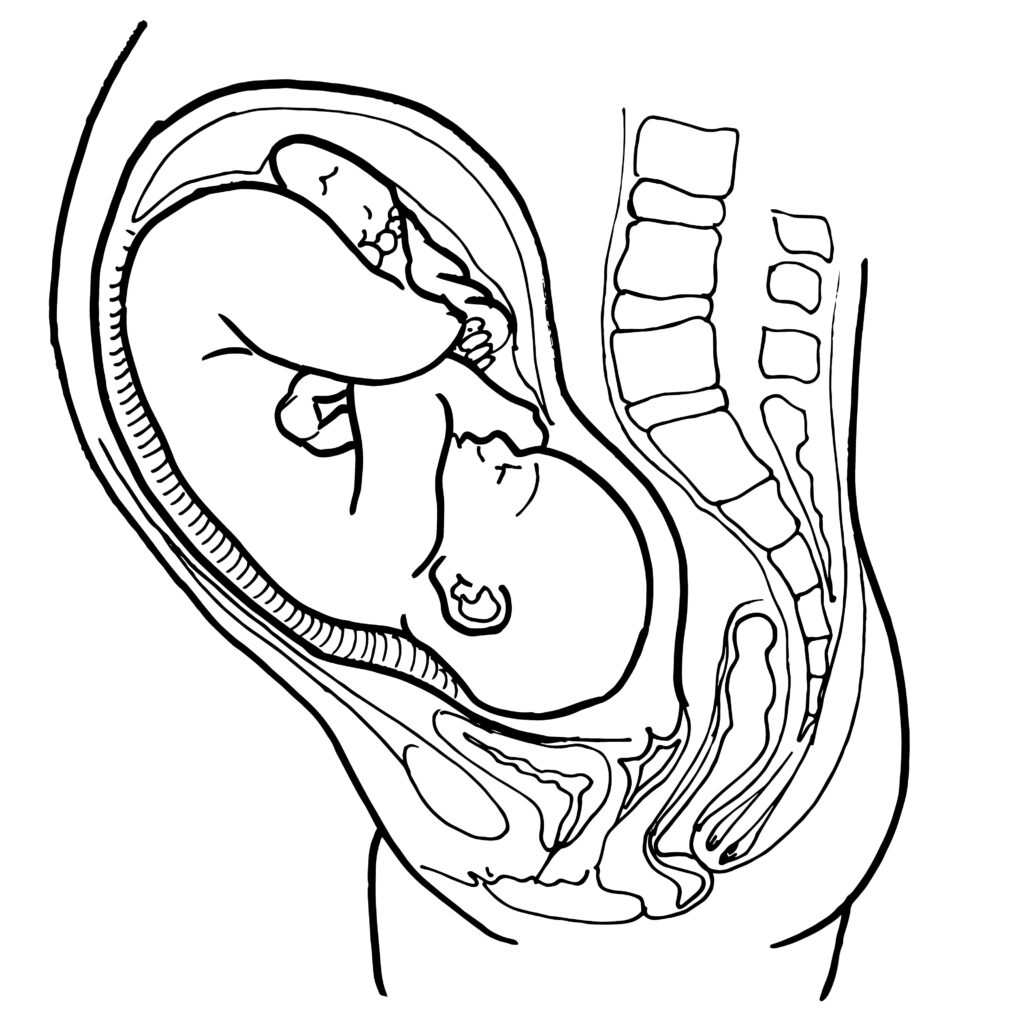
Between the Backbone and Ribs: The Two-Stage Journey of Creation in Surah At-Tariq
From Emission to Emergence
Surah At-Tariq (86:5–7) presents a sequence that has intrigued scholars and readers for centuries:
5. So let man observe from what he was created.
6. He was created from a fluid, gushing forth.
7. It emerges from between the backbone and the ribs.
🔢 Structural Observation: Two Distinct Sentences, Two Stages
The Qur’an presents two distinct grammatical clauses, each carrying its own subject and verb:
- Verse 6: Describes the act of ejaculation — “a fluid, gushing forth” (mā’ dāfiq)
- Verse 7: Describes the next stage of that fluid — “It emerges from between the backbone and the ribs.”
This clear separation allows for a powerful interpretation: the Qur’an is not describing a single moment, but a two-part process in human creation.
Stage 1: Ejaculation
“He was created from a fluid, gushing forth.”
- The masculine pronoun refers to man (insān)
- Mā’ dāfiq implies strong, forceful emission — consistent with ejaculation
Stage 2: Insemination and Internal Emergence
“It emerges from between the backbone and the ribs.”
- The subject now becomes the fluid itself, not the man
- The verb yakhruju (يَخْرُجُ) is present tense, meaning “it emerges” or “it is discharged”
- The phrase min bayni al-ṣulb wa al-tarā’ib means “from between the backbone and the ribs”
This perfectly describes the path sperm travels after ejaculation — deep into the woman’s reproductive tract, ultimately reaching the fallopian tubes.
Anatomical Correlation
The fallopian tubes lie:
- Below the 12th rib (T12), which ends laterally in the flank region
- In front of the lower spine (lumbar vertebrae)
- Centered deep in the pelvic cavity
So, drawing a line from the tailbone (coccyx) to the side of T12, the fallopian tubes rest roughly in the middle of this anatomical zone.
Thus, “from between the backbone and the ribs” corresponds with the very space where fertilization takes place.
Linguistic Accuracy
- Yakhruju means “it emerges”, not simply “emerging”
- Min bayni translates best as “from between”
- No possessive pronoun is used — allowing this location to refer generally to an internal zone, not tied strictly to male or female anatomy
Conclusion: A Layered Scientific Hint
When read as a two-stage biological sequence, the Qur’anic verses align surprisingly well with modern science:
- Stage 1: Emission of reproductive fluid (ejaculation)
- Stage 2: Internal emergence and travel of that fluid (insemination toward fallopian tubes)
The Qur’an uses broad but accurate spatial language to describe an internal, invisible journey that modern embryology confirms. It is not an anatomical textbook, but it certainly speaks a language that biology can now appreciate.

- The emission of sperm
- The internal positioning of the uterus and fallopian tubes
- Their location between the spine and side ribs (T12)
2. It/He (the Baby) Emerges
“It emerges from between the backbone and the ribs.” (86:7)
- The subject of this second verse can clearly be the fluid, or even more interestingly, the next form of life — the developing embryo.
- The verb yakhruju (يَخْرُجُ) according to ChatGpt means:
- “It emerges”
- “It comes forth”
- “It appears”
- “He comes out / is born” (depending on context)
- Thus, this line could even refer to the fetus appearing in its early stages of development from within the mother’s body
Anatomical Correlation
The fallopian tubes lie:
- Below the 12th rib (T12), which ends laterally in the flank region
- In front of the lower spine (lumbar vertebrae)
- Centered deep in the pelvic cavity
So, drawing a line from the tailbone (coccyx) to the side of T12, the fallopian tubes rest roughly in the middle of this anatomical zone.
Thus, “from between the backbone and the ribs” corresponds with the very space where fertilization takes place, and potentially where the embryo first appears.

Linguistic Accuracy
- Yakhruju means “it emerges”, but can also be used for “he appears / he comes out”
- Min bayni translates best as “from between”, conveying a sense of location and origin
- The lack of possessive pronouns leaves open interpretation — could refer to general anatomy, or even internal appearance of life
Conclusion: A Layered Scientific Hint
When read as a two-stage biological sequence, the Qur’anic verses align surprisingly well with modern science:
- Stage 1: Emission of reproductive fluid (ejaculation) [Qur’an 86:6]
- Stage 2: Internal emergence or appearance of life (Insemination/fertilization or fetal development) [Qur’an 86:7]
The Qur’an uses broad but accurate spatial language to describe an internal, invisible journey that modern embryology confirms.
Note: This isn’t about reading science into scripture. It’s about allowing the scripture to speak for itself — and realizing that in its own timeless language, it may have described more than anyone realized at the time.
Timeless Language, Evolving Understanding: The Qur’an and the Dynamic Journey of Human Creation
This article delineates the remarkable linguistic flexibility and adaptive resonance of the Qur’an, focusing on a case study of Surah At-Tariq (86:5–7). We highlight a structural and linguistic feature in the verse pair that appears to describe a two-stage biological process — first, the emission of fluid (ejaculation), and second, the internal journey of that fluid through a zone described as “between the backbone and the ribs.”
What makes the Qur’an extraordinary is its ability to satisfy understanding at every era without causing headache:
- At the time of revelation, the phrasing aligned comfortably with prevailing beliefs that sperm came from the back or loins — without causing theological or intellectual disruption.
- Today, with advanced anatomical knowledge, the same verse is properly read to describe the internal process of insemination in a way that resonates with reproductive biology, without naming organs explicitly.
We illustrate here that the Qur’an’s timeless and general linguistic style allows for a miraculous elasticity — one that avoids contradiction and accommodates deeper readings as human understanding progresses. With deep pondering the Qur’an repeatedly encourages, verses are and can also often used to advance scientific knowledge and research.
We also present critical analysis, including points on:
- Linguistic flexibility vs. retroactive reinterpretation
- The distinction between classical commentary and modern perspectives
- The risks of scientific over-specification
- And the value of reading the Qur’an not just as it was understood, but also how it continues to engage the human intellect in every era.
In short, this is not an attempt to force science into scripture, but to highlight the unusual precision and durable phrasing of a text that still invites meaningful reflection — even across centuries of evolving knowledge.
Surah At-Tariq (86:5–7) continues to invite reflection, not just spiritually, but scientifically.
And Allah knows best.


